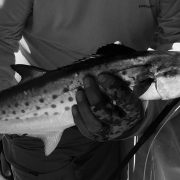The bad hombre stunt is already taken so I had to improvise. I love catching Spanish Mackerel. There it is an admission and we can move on. The Spanish appear in the spring on our Gulf shores and then they make their way into the bay systems. The water temperature needs to be 68-70F and over. What I find exciting about them are the ferocious takes. There is no nibbling or sipping or such cautious stuff they mean business and the fly gets hammered. Their teeth are sharp and cutting.
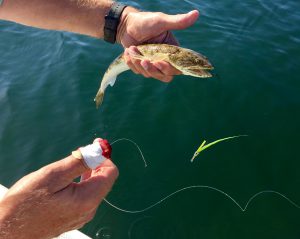
The Spanish got my thumb and did not let go when asked. Lizard fish took a tube fly
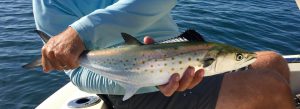
This Spanish Mackerel got my thumb when I was getting the hook out of his mouth
They easily cut through 40 pound even 60 pound strain tippets. They announce their return in the spring by hammering your redfish fly and cut it off. The leader is frayed not with the curlicue end (pig tail) the tell tale of a sloppy tying of fly to a leader. I used to use thick tippet for the terminal connection but I have subsequently moved to nylon coated multi strand wire. It is easier to tie and withstands the mayhem. Of course the coating takes a beating but the wires hold. It is generally a good idea to inspect the wire to fly connection and move the fly up by retying if the tippet has gotten a beating.

Conehead tubefly tied with a nylon coated multistrand wire
The tube flies are remarkable in that after the fish is hooked they ride up the leader and are more durable than the classical flies. However after catching a number of fish they manage to destroy them all the same.
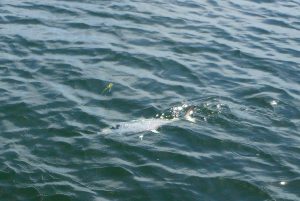
Spanish Mackerel – note how the tube fly rides up the leader
They usually move in schools small or large. If you catch one there are probably many more right there. These are aggressive fish and if you can locate them they usually take a fly. However “always” is a dangerous word and they can follow right up to the boat but then turn away or hammer the fly feet from the boat. This brings me to a general advice. When anglers strip the fly towards them I notice that sometimes they start recasting when there is say 20 feet to the boat. They do this to avoid all that false casting when only a short line is outside the tiptop. However if you stop stripping and just lift up the rod watch the fly swim towards you and bring it to the boat then you are in a position to just roll out the line and go into a backcast and deliver (roll cast pickup). This is called fishing to the bank or boat and is a general advice. Increases your chances of getting strikes and hones your roll casting abilities.
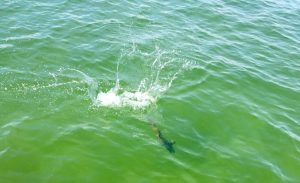
Spanish Mackerel does not want to be caught
Once hooked they put up a decent fight relative to their size and they will make a furious attempt at escape when close to the boat. The Spanish will take all the usual Clousers and they will also take top water flies. When in the mood the fly is not important. This one took a red Crease Fly after having followed subsurface flies repeatedly. So it pays to mix things up. If subsurface does not work try a topwater fly. It does not matter which fly you use to not catch fish. If I can use a topwater fly it is always my choice cause the takes are just so magnificent to witness.
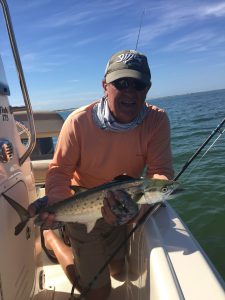
Spanish Mackerel took a red Crease fly in the surface
The Spanish are currently here and I have to go out and chase them because they will disappear when the temperature in the bays decreases. When they are gone I will absolutely not think that I chased them too much and I will miss them. It is a consolation that I can then turn to False Albacore, Pompano, Spotted Seatrout, Redfish or Bluefish. So little time!
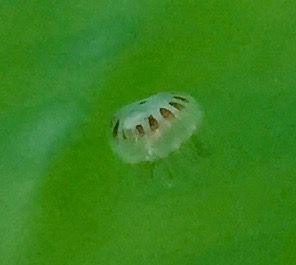
Sea Nettle floating in Pensacola bay
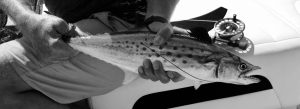
Spanish Mackerel – the nylon coated black wire is clearly visible and so are the sharp teeth
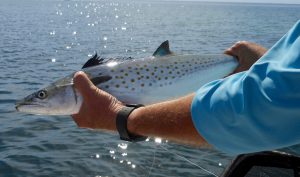
Spanish Mackerel prior to release – notice the blue in the dorsal fins
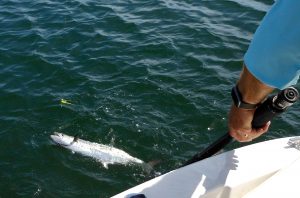
Spanish Mackerel netted – note how the tube fly rides up the leader
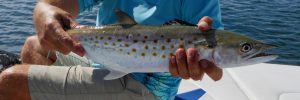
Spanish Mackerel prior to release
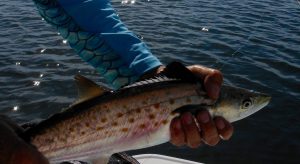
Spanish Mackerel prior to release
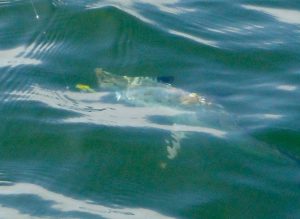
Spanish Mackerel – note the blue tinge of the dorsal fin

